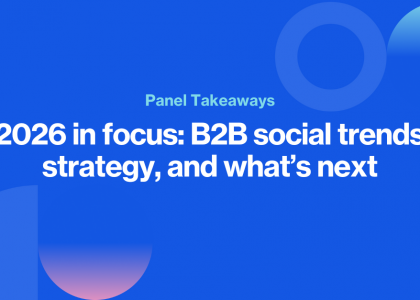30-second summary:
- DTC brands have seen sales triple in the past six years. However, their continued success is jeopardized and they are collectively losing billions of dollars in marketing capitalization
- It is time to flip the creator relationship on its head, and pivot to a business model centred on customer service and loyalty
- James Gregson, Creative Director at Lego, argues DTC companies must make three pivots to survive: Engage through content, build through community, and grow through commerce.
 US direct-to-consumer (DTC) sales have tripled in the past six years with a market size of over $128.33 billion. It’s no surprise. As companies such as Warby Parker stripped away layers of bureaucracy, intermediaries, and overheads, customers revelled in the simplicity of transactions.
US direct-to-consumer (DTC) sales have tripled in the past six years with a market size of over $128.33 billion. It’s no surprise. As companies such as Warby Parker stripped away layers of bureaucracy, intermediaries, and overheads, customers revelled in the simplicity of transactions.
Upon closer inspection, the picture is not as pretty. Among other factors, the rising cost (and falling ROI) of Facebook Ads is choking DTC brands. They are losing billions of dollars in market capitalization. Nearly all DTC brands have worryingly low brand awareness. At the time of its IPO, Warby Parker had a brand awareness of 13%.
This has been a long time coming. For these companies, the influence of media and media distribution was always more important than the product or the brand itself. The time has come to shift the focus towards brand experience and brand value.
I argue there are three pivots DTC brands should be making to reallocate their focus:
- Engage through content
- Build through community
- Grow through commerce
By embracing these three tenets, DTC brands can evolve their offering and messaging. They can avoid the sea of sameness which threatens to swallow so many of these organizations.
Engage through content
Our approach to content creation is backwards. We need to move away from the growth marketing mentality that has led to producing huge volumes of remarkably similar, very bland adverts. This approach is no longer cost efficient or effective with the decline in efficacy of social media advertising. A more focused, less is more approach to content marketing is required.
Additionally, digitally native brands enjoyed huge sales in part due to influencers. By using influencer marketing, they built brand credibility quickly and reached their target customers faster. However, influencer marketing is getting expensive, and influencers are becoming selective of the brands they work with. Successful influencers are also leaning towards creating and launching their own (hugely successful) DTC brands. We have access to these creators who have built their own brands, communities, and merchandise, and instead choose to limit their role to content delivery. All that potential, wasted.
Creators know more about their audience than anyone. Do not rely on them solely for message delivery. Instead, lean on them for the value they have already delivered to your audience. Bring their insights into the creative process and give them the responsibility and space to do what they do best. See them as the brains behind the operation, not just the face.
Mini Case Study #1
Whole Foods recently gave Rudy Whillingham – a fantastic TikTok creator – this level of responsibility. His stop motion technique which elevated him to TikTok success was recognized for its handmade quality by Whole Foods, who asked Whillingham to direct the campaign. The result was a completely differentiated campaign with no digital effects. Just reward for building a creator-led strategy.
By giving creators this level of ownership and responsibility, DTC brands can flip the creative process on its head. Fresh perspectives from ready-made audience experts will drive differentiation.
Paid advertising is only as effective as having a strong brand to begin with. Brands that have built a strong image through differentiation and storytelling are the ones succeeding in the face of paid ads’ limitations. And if you are not convinced yet, keep in mind it will generally cost a fraction of the price than hiring a traditional director.
Build through community
A woefully undervalued aspect of customer experience is community. Community is the most powerful driver of experience, and it does not just belong to sports, culture, religion, or politics. It can exist in customer settings too.
DTC companies struggle with creating a sense of community around their brands. In truth, it’s rare for a brand to create a community out of nothing. Your community already exists. In a lot of cases, it is out there already. Rather than talking at your customers and telling them what they should be feeling, listen to them, find where they are residing before jumping in.
A key tenet of the broader definition of community is building out customer services as a marketing strategy rather than just a service center. There are a host of AI-powered customer service platforms that serve as an effective service center. But they do not foster the sense of community that positively affects your bottom line. A recent Salesforce report found that 89% of customers say a good customer service experience makes them more likely to make another purchase.
Mini Case Study #2
Take dog food as an example. You can buy the same dog food with a click of a button from Target, Amazon, Walmart, the vet, Petco or Chewy. Chewy opted to differentiate its offering by tapping into a digital community of pet owners and recently went viral for a brilliant example of customer service.
 A customer contacted Chewy to ask if they could return a bag of dog food that would no longer be needed after their dog died. The last thing they needed was an automated message. Instead, Chewy refunded the full amount, advised the food to be donated to a dog shelter, and delivered flowers to the customer. It was a small part in easing the pain of a difficult moment for their customer but spoke volumes to the vast community of pet lovers that exist online. The positive word-of-mouth was immense, with customers sharing similar experiences and stating intent to be customers for life.
A customer contacted Chewy to ask if they could return a bag of dog food that would no longer be needed after their dog died. The last thing they needed was an automated message. Instead, Chewy refunded the full amount, advised the food to be donated to a dog shelter, and delivered flowers to the customer. It was a small part in easing the pain of a difficult moment for their customer but spoke volumes to the vast community of pet lovers that exist online. The positive word-of-mouth was immense, with customers sharing similar experiences and stating intent to be customers for life.
Whether your product is dog food, dental hygiene, or athleisure, chances are the community that surrounds it existed long before you started selling. Use your customer service team as an extension of marketing to listen, understand, and respond. An effective community can be an invaluable source to marketable first-party data.
Grow through commerce
As the marketplace floods, the resulting sea of sameness across the DTC space is choking brand value and experience. It is challenging for brands to expand their product offering in a way that offers genuine utility. Often, they are only selling a solitary product. Their brand is built around this product, and it has taken them from survival to profitability. This creates a buyer experience where the customer buys the product once and never sees the brand again. There is no community to keep the customer engaged, retained, and sharing their story with like-minded people.
DTC leaders, as they grow, may opt to expand their offering. The broader your offering, the more touchpoints of audience passion you can use to foster a community. It can help brands evolve and adapt. Unfortunately, this is also the trickiest way to build your community. If you cannot offer new products that continue to add the same (or more) value as your existing offering, the exercise is redundant.
As successful DTC brands grow, they must recognize the need to evolve and optimize quickly and efficiently. They must closely monitor their strategies and revise when necessary. Crucially, they must develop and maintain an intense focus on customer loyalty to stay healthy in this wildly competitive, turbulent economy.
Mini Case Study #3
Countless DTC brands are (rightly so) focused on conversion when they could be growing through a loyalty-based community. Take Ooni who sell pizza ovens. A traditional loyalty scheme would be ineffective. I can’t think of many customers who would be purchasing countless pizza ovens in the hope of scoring rewards or points. However, in this wildly fragmented consumer and media landscape brands like Ooni could hugely benefit to invest (more so than ever) in customer-first, brand building that grows audiences and increases affinity. Ooni sit on a community that has existed for decades: Pizza lovers and home cooks. Tapping into these already active fandoms would unlock massive potential.
Conversely, from the same cooking category, Chef Steps run a different business model that is content-first and community-led. This business model allows Chef Steps a more direct route to its community and builds loyalty within it. For DTC brands, rebuilding for customer loyalty does not mean developing a traditional loyalty scheme. It will not work because they lack the brand equity that traditional brands. Instead, they must adjust their business model to put their community first.
DTC brands must escape the ‘sea of sameness’
It is a challenging time to be a DTC brand. The landscape for digital marketing is volatile. Before too long, it will be unrecognisable from even two years ago. Two years ago, you spent 80% of your marketing efforts on digital growth strategies. Now this number might even be 20%.
These changes have had a dramatic impact on how brands track and target consumers, for better and for worse. Without the insights third party cookies provide and with the introduction of iOS 13-14.5, attribution is virtually immeasurable. Brands that merely produce a low value product that is near-identical to existing offerings will be gambling on their audience making a switch. With a recession looming, it becomes unsustainable.
DTC brands have no choice but to pivot their approach to content, community, and commerce. Doing so will allow them to build utility. Utility is underrated. It’s one thing to create content to get someone to click on a website. It’s another thing entirely to provide content that offers value and teaches the audience something or makes them learn something they did not know before. If you are not sitting at the top of the tunnel where you are just striving for heightened high-level awareness, developing a content strategy centred on utility is a necessity.
Failure to do so will result in falling revenue and plummeting stock prices. Now is the time to develop creator relationships, prioritize customer service, and rebuild loyalty programs. Creating meaningful experiences for your customers will resonate with your community and help you to differentiate. The sea of sameness is rising. Don’t let it sweep you away.
James Gregson is the Creative Director at Lego Group, leading a team responsible for creating best-in-class digital content across The LEGO Group’s owned digital ecosystem. He was recently recognized in the AdWeek Creative 100.
Subscribe to the ClickZ newsletter for insights on the evolving marketing landscape, performance marketing, customer experience, thought leadership, videos, podcasts, and more.
Join the conversation with us on LinkedIn and Twitter.
The post Differentiate or die: Three pivots DTC brands must make to survive appeared first on ClickZ.




